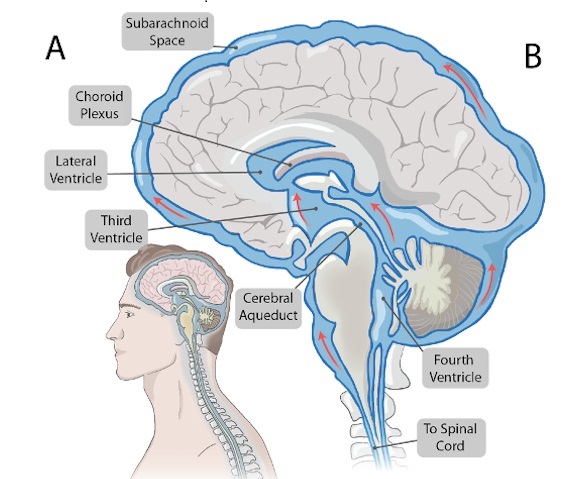Novel Neural Interface to Help Diagnose and Treat Neurological Disorders with Minimal Surgical Risks
|
By HospiMedica International staff writers Posted on 19 Nov 2024 |

Traditional methods of interfacing with the nervous system typically involve creating an opening in the skull to access the brain. Researchers have now introduced an innovative technique called endocisternal interfaces (ECI), which enables electrical recording and stimulation of neural structures, including the brain and spinal cord, through the cerebrospinal fluid (CSF). CSF, which naturally surrounds the nervous system, is used as a conduit for delivering targeted devices. By performing a simple lumbar puncture in the lower back, researchers can insert a flexible catheter to access both the brain and spinal cord. Using miniaturized magnetoelectric-powered bioelectronics, this wireless system can be deployed with a small percutaneous procedure. The flexible catheter electrodes can then be guided from the spinal subarachnoid space to the brain ventricles.
To test the hypothesis, a research team from Rice University (Houston, TX, USA) studied the endocisternal space and measured the width of the subarachnoid, or fluid-filled, space in human patients through magnetic resonance imaging. They further validated the feasibility of this new neural interface by conducting experiments on large animal models, specifically sheep. Their experiments showed that catheter electrodes could be successfully delivered and navigated into the ventricular spaces and brain surface for electrical stimulation. With the magnetoelectric implant, the researchers were able to record electrophysiological signals such as muscle activation and spinal cord potentials.
Preliminary safety findings indicated that the ECI system remained functional with minimal damage up to 30 days after the electronic device was chronically implanted in the brain. Furthermore, the study, published in Nature Biomedical Engineering, revealed that, unlike endovascular neural interfaces that require antithrombotic medication and are constrained by the size and location of blood vessels, ECI provides broader access to neural targets without the need for such medication.
“This is the first reported technique that enables a neural interface to simultaneously access the brain and spinal cord through a simple and minimally invasive lumbar puncture,” said Peter Kan, professor and the Robert L. Moody Sr. Chair of Neurosurgery at UTMB. “It introduces new possibilities for therapies in stroke rehabilitation, epilepsy monitoring and other neurological applications.”
Latest Surgical Techniques News
- Early TAVR Intervention Reduces Cardiovascular Events in Asymptomatic Aortic Stenosis Patients
- New Procedure Found Safe and Effective for Patients Undergoing Transcatheter Mitral Valve Replacement
- No-Touch Vein Harvesting Reduces Graft Failure Risk for Heart Bypass Patients
- DNA Origami Improves Imaging of Dense Pancreatic Tissue for Cancer Detection and Treatment
- Pioneering Sutureless Coronary Bypass Technology to Eliminate Open-Chest Procedures
- Intravascular Imaging for Guiding Stent Implantation Ensures Safer Stenting Procedures
- World's First AI Surgical Guidance Platform Allows Surgeons to Measure Success in Real-Time
- AI-Generated Synthetic Scarred Hearts Aid Atrial Fibrillation Treatment
- New Class of Bioadhesives to Connect Human Tissues to Long-Term Medical Implants
- New Transcatheter Valve Found Safe and Effective for Treating Aortic Regurgitation
- Minimally Invasive Valve Repair Reduces Hospitalizations in Severe Tricuspid Regurgitation Patients
- Tiny Robotic Tools Powered by Magnetic Fields to Enable Minimally Invasive Brain Surgery
- Magnetic Tweezers Make Robotic Surgery Safer and More Precise
- AI-Powered Surgical Planning Tool Improves Pre-Op Planning
- Novel Sensing System Restores Missing Sense of Touch in Minimally Invasive Surgery
- Headset-Based AR Navigation System Improves EVD Placement
Channels
Critical Care
view channel
AI Interpretability Tool for Photographed ECG Images Offers Pixel-Level Precision
The electrocardiogram (ECG) is a crucial diagnostic tool in modern medicine, used to detect heart conditions such as arrhythmias and structural abnormalities. Every year, millions of ECGs are performed... Read more
AI-ECG Tools Can Identify Heart Muscle Weakness in Women Before Pregnancy
Each year, some mothers die from heart-related issues after childbirth, with many of these deaths being preventable. Screening for heart weakness before pregnancy could be crucial in identifying women... Read morePatient Care
view channel
Portable Biosensor Platform to Reduce Hospital-Acquired Infections
Approximately 4 million patients in the European Union acquire healthcare-associated infections (HAIs) or nosocomial infections each year, with around 37,000 deaths directly resulting from these infections,... Read moreFirst-Of-Its-Kind Portable Germicidal Light Technology Disinfects High-Touch Clinical Surfaces in Seconds
Reducing healthcare-acquired infections (HAIs) remains a pressing issue within global healthcare systems. In the United States alone, 1.7 million patients contract HAIs annually, leading to approximately... Read more
Surgical Capacity Optimization Solution Helps Hospitals Boost OR Utilization
An innovative solution has the capability to transform surgical capacity utilization by targeting the root cause of surgical block time inefficiencies. Fujitsu Limited’s (Tokyo, Japan) Surgical Capacity... Read more
Game-Changing Innovation in Surgical Instrument Sterilization Significantly Improves OR Throughput
A groundbreaking innovation enables hospitals to significantly improve instrument processing time and throughput in operating rooms (ORs) and sterile processing departments. Turbett Surgical, Inc.... Read moreHealth IT
view channel
Printable Molecule-Selective Nanoparticles Enable Mass Production of Wearable Biosensors
The future of medicine is likely to focus on the personalization of healthcare—understanding exactly what an individual requires and delivering the appropriate combination of nutrients, metabolites, and... Read more
Smartwatches Could Detect Congestive Heart Failure
Diagnosing congestive heart failure (CHF) typically requires expensive and time-consuming imaging techniques like echocardiography, also known as cardiac ultrasound. Previously, detecting CHF by analyzing... Read moreBusiness
view channel
Expanded Collaboration to Transform OR Technology Through AI and Automation
The expansion of an existing collaboration between three leading companies aims to develop artificial intelligence (AI)-driven solutions for smart operating rooms with sophisticated monitoring and automation.... Read more

















